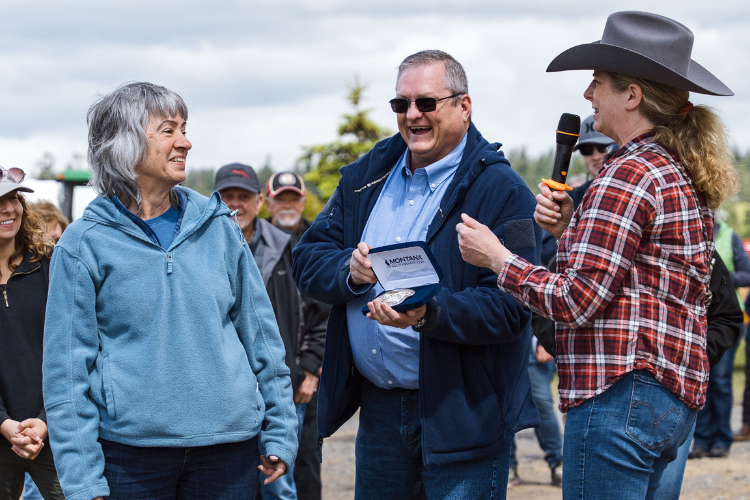Grazing With Rare Plants
posted on
April 28, 2023

Colvin Ranch is located on a unique prairie habitat that’s home to rare and endangered plants and animals. At one time, prairies covered more than 180,000 acres in Southwest Washington. Less than 3% of the native prairie habitats remain today, which makes conservation efforts even more important.
In 2005, we enrolled the ranch in the Grassland Conservation Reserve Program to protect and enhance our native prairies. Since then, we’ve worked in partnership with the National Resources Conservation Service to implement grazing plans that have helped rare prairie plants thrive and expanded habitat for the endangered species that live at the ranch.
Much of the work that we do with the cattle and the land revolves around conservation grazing practices. One important part of our practice involves deferred grazing, where we keep cattle off of certain areas in the spring during the critical growing periods for native plants. Once the plants have gone to seed, cattle are moved back into these areas to graze down excess foliage so that the seeds have a chance to grow.
Another practice we use is intensive grazing, where we graze cattle in a small area and move them every day to fresh grass. This allows us to make the most efficient use of the grass that’s growing, and allows plants time to recover and regrow so that they can be grazed again.
Although using conservation grazing practices like these takes more work, the benefits are clear. The plants benefit as they’re allowed to grow and rest during their natural cycles. The cattle benefit by having more fresh grass to eat. And we benefit because we don’t have to purchase as much hay to feed in the winter, which also helps keep our prices affordable for customers.
Over the past 10 years, we’ve increased the diversity of plant species on the prairie by 20%. Today, we have more than 160 unique plant species, and 28 critical prairie plants used by endangered butterflies like the Taylor’s checkerspot and Mardon skipper.
You can see the difference it makes when conservation and agriculture work together just by taking a look at the prairie when you come to the ranch to pick up your order. By keeping working lands working, we can preserve native species and enhance critical habitats.
For more details about the unique prairie ecosystem at the ranch and our conservation grazing practices, see our presentation about grazing with rare plants from the Southwest Washington Grazing School.



